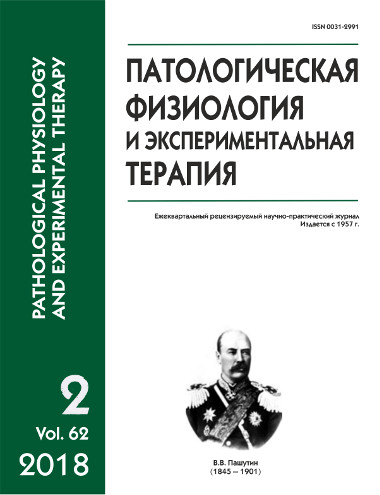Etiopathogenetic mechanisms of disadaptive disorders in students during training
DOI:
https://doi.org/10.25557/0031-2991.2018.02.122-128Keywords:
transition states, disadaptive disorders, risk factors, pathogenetic mechanisms, preventionAbstract
Aim. Based of published reports to analyze risk factors for development of disadaptive disorders (DD) and to elucidate pathogenetic mechanisms of DD development during education for their timely prevention and correction. Methods. In this study, general scientific methods of theoretical knowledge were used, such as abstraction, analysis and synthesis, analogy, induction and deduction, and mental modeling. Results. This review examined the literature on development of DD in people during training. We presented evidence that borderline disorders of adaptation are bifunctional and characterized by an asymptomatic course. The role of sociogenic, environmental factors in the occurrence of DD was established. Emphasis was placed on the fact that DD often develop in the process of learning under the influence of adverse environmental factors and lifestyle. Opinions on the role of etiologic risk factors in the development of DD were presented. Features of psychosomatic disorders, psychophysiological status, and manifestations of maladaptation in students were discussed. Current ideas about the DD organization and different types of body adaptation to the conditions of educational environment were analyzed in detail. The author focused on the effect of typology on the level of adaptation (maladaptation) in the body and the systemic organization of mental functions. Activation of limbic-reticular formations, dysfunction of mid-brain stem structures, and disintegration of cortical-subcortical relationships were shown to play a leading role in the pathogenesis of DD. Conclusion. A detailed understanding of DD mechanisms allows to use different methods for prevention of DD. Some non-drug and pharmacological methods for DD correction and sanatorium rehabilitation of students were discussed in this review. Identifying true mechanisms for development of maladaptive disorders will provide a solution of many issues in pathophysiology of brain integrative activity. This, in turn, will help finding ways to correct psychosomatic disorders and to use more effective methods in medical and psychological care.Downloads
Published
2018-06-04
Issue
Section
Reviews
How to Cite
[1]
2018. Etiopathogenetic mechanisms of disadaptive disorders in students during training. Patologicheskaya Fiziologiya i Eksperimental’naya Terapiya (Pathological physiology and experimental therapy). 62, 2 (Jun. 2018), 122–128. DOI:https://doi.org/10.25557/0031-2991.2018.02.122-128.






